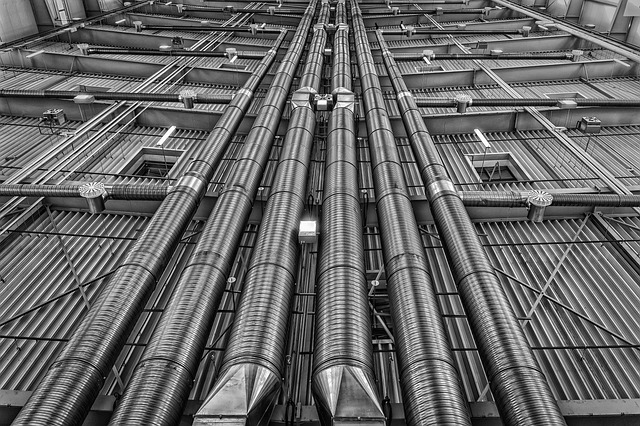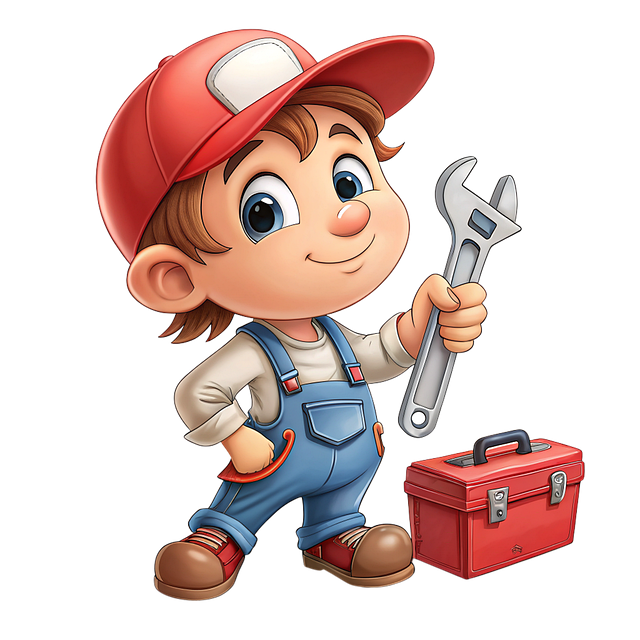Multi-stage unit heaters offer precise temperature control for industrial and commercial spaces, dividing heat production into stages based on needs. With flexible installation options like suspended heaters, gas fired units, electric models, and ceiling mounts, they ensure efficient energy use. Regular maintenance is crucial to extend lifespans and maintain peak performance, especially for forced air heating in warehouses and diverse settings where unit heaters are indispensable.
In the pursuit of optimal temperature control, multi-stage unit heaters emerge as indispensable tools for industrial and commercial applications. This comprehensive guide explores these advanced heating systems, unraveling their intricacies and highlighting key components crucial for precise temperature regulation. From understanding their multi-step functionality to discovering their numerous advantages, we delve into practical applications and essential maintenance practices for unit heaters, offering valuable insights for professionals seeking efficient thermal management solutions.
- Understanding Multi-Stage Unit Heaters
- Key Components for Precise Temperature Control
- Advantages of Multi-Stage Heating Systems
- Applications in Industrial and Commercial Settings
- Maintaining Optimal Performance: Tips & Best Practices
Understanding Multi-Stage Unit Heaters

Multi-stage unit heaters are sophisticated heating solutions designed to provide precise temperature control in a variety of settings, from warehouse applications and commercial heating to industrial spaces. These heaters operate by dividing the heating process into multiple stages, allowing for more efficient energy use and greater accuracy. The first stage activates when the ambient temperature drops below a set point, providing initial heat. Subsequent stages kick in as needed, based on real-time temperature readings, ensuring optimal BTU capacity for forced air heating without overheating.
Suspended heaters, gas fired units, electric heaters, and ceiling-mounted options all contribute to flexible installation possibilities. The ability to control each stage independently allows for tailored heating in different zones of an industrial space or commercial building. This precision is particularly beneficial for maintaining ideal conditions in large or irregular spaces, where traditional heating systems might struggle.
Key Components for Precise Temperature Control

Precise temperature control in industrial spaces, warehouse applications, and commercial heating environments demands robust components that work in harmony. At the heart of this process are unit heaters, carefully designed to handle various heat transfer mechanisms like gas fired units or electric heaters. These heaters incorporate key components such as advanced thermostats, temperature sensors, and precise BTU capacity adjustments to maintain optimal settings.
For efficient forced air heating, ceiling mounted suspended heaters often prove effective due to their ability to distribute heat evenly throughout the space. This ensures not only comfort but also energy conservation. The right combination of these components allows for tailored heating systems that cater to specific requirements, making them indispensable in industrial and commercial settings where temperature regulation is paramount.
Advantages of Multi-Stage Heating Systems

Multi-stage heating systems offer a host of advantages for various applications, including warehouse and commercial settings. These advanced unit heaters provide precise temperature control by gradually increasing or decreasing heat output in stages, ensuring optimal comfort and efficiency. Unlike traditional fixed-output heaters, multi-stage models can adapt to changing environmental conditions, making them ideal for industrial spaces where maintaining specific BTU capacities is crucial.
With options like gas fired units, electric heaters, and even suspended heaters available, these heating systems cater to diverse needs. Ceiling-mounted designs offer discreet yet effective forced air heating, enhancing the overall ambiance of commercial and industrial spaces. By prioritizing energy conservation without compromising performance, multi-stage unit heaters are revolutionizing how we approach commercial heating, making them a game-changer in any environment.
Applications in Industrial and Commercial Settings

Unit heaters play a vital role in maintaining precise temperature control across various industrial and commercial settings. From vast warehouse applications to bustling retail stores, these versatile heating systems are designed to cater to diverse heating needs. Gas fired units, electric heaters, and even suspended heaters offer adjustable BTU capacity, making them ideal for controlling ambient temperatures in large industrial spaces or specific zones within commercial buildings.
In warehouse applications, for instance, forced air heating through ceiling-mounted unit heaters ensures optimal conditions for efficient operations, protecting sensitive goods from temperature fluctuations. Similarly, in commercial settings like offices and hotels, these heaters enable comfortable and consistent heating, enhancing the overall environment without unnecessary energy wastage. The flexibility of these heating systems, whether it’s electric, gas fired, or suspended models, allows for precise control, ensuring every space receives the desired level of comfort and efficiency.
Maintaining Optimal Performance: Tips & Best Practices

To maintain optimal performance with multi-stage unit heaters, regular maintenance is key. Start by checking the BTU capacity to ensure it matches the heating load of your space. Improper sizing can lead to inefficiencies and uneven temperature control. Next, inspect connections for any leaks or corrosion, especially in gas fired units, as these issues not only impact efficiency but also pose safety hazards.
For electric heaters and suspended heaters mounted on ceilings, ensure proper ventilation to prevent the buildup of hot air. In industrial spaces and warehouse applications, forced air heating systems require regular cleaning to maintain their efficiency. Additionally, monitor the condition of heating elements and replace them as needed. Regular maintenance not only extends the lifespan of your unit heaters but also ensures they operate at peak performance, providing precise temperature control for commercial heating needs in various industrial spaces.
Multi-stage unit heaters offer unparalleled temperature precision, making them indispensable for various industrial and commercial applications. By carefully selecting components and implementing best practices for maintenance, these advanced heating systems can significantly enhance operational efficiency and productivity. As businesses seek innovative solutions to stay competitive, understanding the benefits of multi-stage unit heaters is essential in navigating today’s dynamic market demands.
